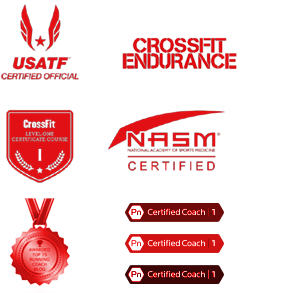What runners can do to at home to keep their fitness.
You can still keep your running gains while at home
Running was supposed to be our saving grace to keep us fit and sane, but it like we may be stuck indoors sooner than later without gym access.
You can get a great sweat at home – but to keep your running fitness, you need to work your aerobic system.
Most running should be completed at an easy effort for a prolonged time whereas the at-home workouts shared by fitness instructors are high-intensity interval training (HIIT)
HIIT is great to get a tool to break a sweat but is less than ideal to improve or maintain your running fitness.
You want to pick easier movements and monitor your intensity to keep overall fatigue low. If you are not mindful of your movement selection, you may reach muscle exhaustion too quickly and will force you to rest. As runners – we don’t want rest.
If running is your goal – here is what to do.
Set a timer for your desired duration and choose one movement from each of the groups below and follow the duration instruction from each group
Group A) Low fatigue high reps cardio moves.
**4-10 mins per set**
Jumping jacks
Running in place high knees
Jump rope with or without a rope
Squat Thurst (burpee with no push-up)
Bodyweight Step-ups
Group B) Moderate fatigue moves cardio moves
**2-4 mins per set**
Burpees
Squat Jumps
Air Squats
Mountain climbers
With weight, if you have it.
– Use any variation of any of the above moves to keep things fresh. Ex – Surrender squats, or mountain climber with a twist or curtsy lunges. The move you do does not matter as much as the rate in which you are doing it.
Group C) High fatigue moves
**30 – 60 seconds per set**
Use these moves as a way to break up the monotony. If you focus on these too heavily on these moves, you will quickly move into the anaerobic zone, which you can only maintain for 60-90 seconds. It would be like a full sprint in the middle of your easy run. Not ideal.
Push-ups
Sit-ups
Bench Dips
Broad Jumps
Jumping lunges
Moves to avoid
- Isolation moves (curls, triceps extensions, shoulder press)
- Supine or prone weighted moved (bench press, renegade row)
- Supine and prone core moves
When you put yourself on the ground for a prolonged time and laying horizontal, your heart rate will slow as it is easier for the blood to pump horizontally than vertically – you know gravity and all. And isolation moves are just too slow. We rarely stop when we run.
How to implement the workouts.
Go on time set a timer and go in descending time and take any of the above moves in the categories and fix them to a set amount of time.
Group A) 4-10 mins per set
Group B) 2-4 mins per set
Group C) 30 – 60 seconds max
Example:
5 Rounds = 40 min run
5 mins Bodyweight Steps ups
2 mins Burpees
1 min tuck jumps
- no rest between rounds
To break up the monotony, you can add several moves from group A or B.
Example:
5 mins Step-ups
2 mins Burpees
5 mins Jump Rope
2 mins lunges
1 min Bench Dips
Four rounds = 60 min aerobic effort
Work antagonist muscle groups to avoid burnout.
If you hit back to back exercises using the same muscles, your fatigue will rise too quickly, and you will have to rest.
Poor workout examples:
5 Mins Squat Thruster
3 mins burpees
3 min push-ups
- Your shoulder and chest will burn out.
Ex 2)
Bodyweight Step up
Lunges
Jumping Lunges
- Too much quad focus without rest.
There will still be some prolonged efforts. For example, 5 minutes of jump rope will be monotonous, but you are a runner, so that should be no problem.
Checking your heart rate can help identify work efficacy.
Check your heart rate throughout the workout to make sure it stays in the aerobic zone. If you are unfamiliar with where your HR would be during an easy run, take 180-Age to determine your easy aerobic effort. Optimally you would not go higher than the easy HR number and would stay no less than 10 BPM under your target HR.
If you don’t have a monitor, stop and take your pulse for 10 seconds and multiple it by 6. You’re at home so you should have a calculator, right? If your heart rate drops too low, then you need to find a different movement that keeps it elevated.
To simulate speed days, you can use a similar formula or just grab any of the HIIT that fitness instructors are posting and aim for an intended duration.
You can keep your fitness level during this prolonged time without racing. Now can even be an advantage for your race season when events start again. Stay focused on what you can do, and you can become a better runner.

